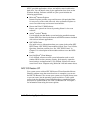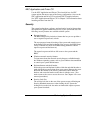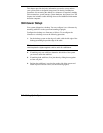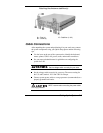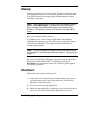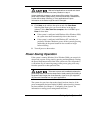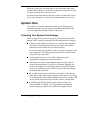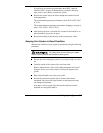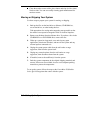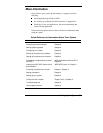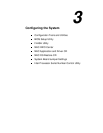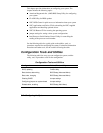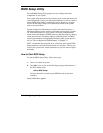
2-6
Setting Up the System
When the system goes into sleep mode, it saves data and system status
and then shuts off power to all possible components. Sleep mode lets you
save power without first saving your work.
An amber power lamp indicates that the system is in sleep mode. Press a
key or move the mouse to resume system operation where you left off.
System Care
Your system is a durable system built for heavy use. With protective
measures and proper care, you can prevent problems and promote the
successful operation and long life span of the system.
Protecting Your System From Damage
There are several ways that you can protect your system from possible
damage. NECC strongly recommends the following protective measures.
Connect a surge suppressor between your computer and a grounded
wall outlet. A surge suppressor protects your system from sudden
transient increases and decreases in electrical power.
Be sure to connect all peripherals, such as a monitor and printer, to the
surge suppressor. The surge protector should be the only device that
you plug into the wall outlet.
Avoid repeated power-on cycles. These subject the system
components to temperature variations and stress.
Disconnect your system from telephone and power lines when an
electrical storm threatens. If you have a fax/modem, lightning can
travel in on the phone line and damage both the fax/modem and the
system unit. Lightning can also travel in on power lines and damage
the monitor and system unit.
Be sure that system power is off before you connect or disconnect a
cable. Never make cable changes when the system power is on. Doing
so can damage the system and its peripherals. However, note that USB
devices do not require powering down the system to connect them.
Use BIOS Setup Utility options to protect against viruses (see
“Security Menu” in Chapter 3). Use appropriate virus detection
software regularly to protect the system from computer viruses.



